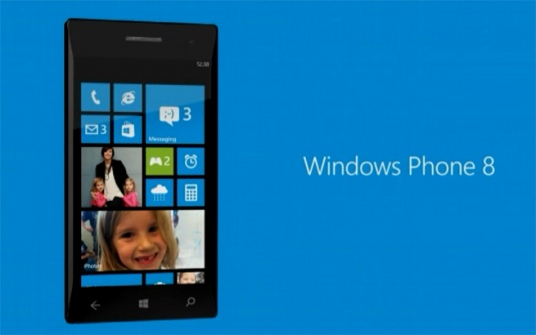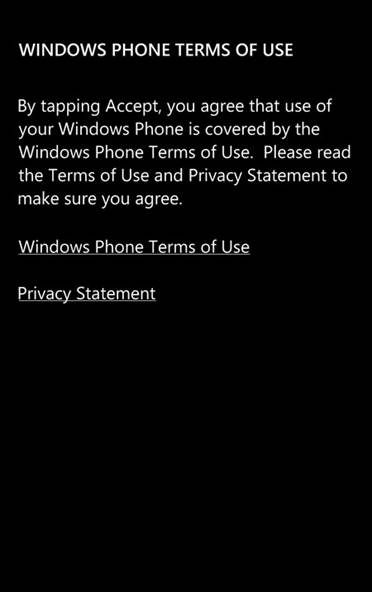2 years ago, the mobile market was quite
different from how it is now. The top Android phones had 1GHz single-core CPU
and was in the process of upgrading to Froyo, the iPhone 4 was Apple's selected
phone and the word "phablet" is certainly followed by
"Gesundheit" (German, means good, outstanding). (Maybe, it still is).
This is just a brief glimpse into the world where Microsoft's Windows Phone 7
was born. Intended to be the alternative to the obsolete Windows Mobile 6.x
platform, WP7 did its best to disrupt the industry by providing the unique user
interface Metro and faster overall performance.

Windows
Phone 8
However, one problem is growing, the mobile
industry is changing quite rapidly, and the Windows Phone’s honeymoon did not
last long as Microsoft would like. Currently, the company has less than 5% of
the world smartphone market share in preparing to release a newer version,
Windows Phone 8. The new promising Firmware solved the problems around the
hardware limitations of the platform ecosystem, bringing more features and
long-waited integration with Windows 8 operating system. It is one heavy duty
for Microsoft to make, but we hope two trips around the Sun are sufficient for
the software giant to impress us with the mobile platform of its struggles. Can
it do that? Let’s take a look at what makes Windows Phone 8 successful.
Hardware
We do not often have the hardware part in a
mobile operating system review, and it will be even rarer if we place heavy
emphasis on it. But, one of the enhancements that have been anticipated most in
Windows Phone platform is the support for some overdue hardware components.
Since WP7 (and WP7.5, also known as Mango) was released, Microsoft's method of
standardizing almost every aspect of its hardware: the OEM is limited to the
single core processors, WVGA screens, no outside storage and so on. The company
always defends this decision, because the standard support seems to help run
WP7 and smoother performance - not to mention having less work to do as
developers create apps for multiple devices.

Windows
Phone 8 setup
With WP8, Microsoft has changed the
attitude or find a way to keep its platform running as efficiently as before
even with the new additions. Either way, it is a necessary change for the
company if it hopes to relate to the current competitive market. Let’s consider
the most important changes to the hardware capabilities of WP8.
Many
cores
So far, the limitations of Microsoft with
multi-core processors have been a disappointing move for knowledgeable users in
the past 2 years. Critics have argued that the company did not keep up with the
times or match Android and iOS. Meanwhile, Microsoft constantly reassures us
that the move to 2 cores or more would take place once the company found a way
to preserve battery life. Regardless of whether you agree with this argument or
not, the fact now is that this time WP8 can support from 2 cores to 64 cores.
These devices running the operating system will start with the dual-core Snapdragon
S4, but we think that Microsoft will be very long before getting the green
light for the quad-core chipset. We are going to take the performance
evaluation until we examine the individual equipments. Just to say we are fans
of the fast and smooth operating system like on WP7, and the first impression
of Windows Phone 8X of course continues (and improves) the trend with the new
specifications.
Screen
resolution
With WP7, only 1 screen resolution is
allowed: WVGA or 800x480. Again, it's on par with high-end Android devices in
2010 (and lost to the iPhone's Retina display). As you can imagine, this is a
another headache for users - especially when 720p resolutions have become so
popular. Windows Phone 8 devices can now support one of three options: WXGA (1,280x768),
720p (1,280x720) and old WVGA (ideal for basic smartphones). Now it brings the WP8
screens back to the modern times, but we have begun to see the Android phones
with 1080p screens, and it will not be long before it becomes the new standard
for high-end phones. WP8 does not have a good start, but we hope that we will
see more options available in the near future.

Windows
Phone 8 devices can now support one of three options: WXGA (1,280x768), 720p
(1,280x720) and old WVGA (ideal for basic smartphones).
Storage
can be expanded
With the exception of the mysterious
Samsung Focus, Microsoft terminated removable storage for WP7 devices. It is a
strange situation, because many phones using this operating system has actually
a microSD slot hidden in inaccessible places. Naturally, it caused controversy
when the platform was launched, but eventually the problem was solved, now Windows
Phone 8 fully supports external storage via SDXC, allowing you to add up to
64GB of memory supplement. Unfortunately, our special testing unit (HTC Windows
Phone 8X) does not include a microSD slot, so we could not experience it
yourself.
NFC
Finally, Windows Phone 8 has natural
support for NFC. This opens up many potential for users and developers. Also with
the new Wallet feature, you will be able to use NFC to transmit quite a lot of
contents from the phone to the PC or other devices. We will discuss these
features in more detail as we go through this review. (Also, we've seen this
technology first appear on a Windows Phone device before - namely the Nokia Lumia
610 NFC - but it was added as a software package for the operating system,
while WP8 will support natural features).
As they did before, Microsoft provides a
list of hardware requirements for each phone to run Windows Phone 8. The list
includes:
·
Dual-core processor Qualcomm Snapdragon S4
·
512MB RAM minimum for WVGA phones, at least 1GB
of RAM for 720p/WXGA
·
Minimum 4GB flash memory
·
And A-GNSS GPS, GLONASS OEM support if the
decision to include it
·
Support for micro-USB 2.0
·
3.5mm stereo headset jack with support 3 button
detection
·
AF rear camera with Xenon and LED flash, front
camera option (they both need is VGA or rural) and dedicated camera button
·
Accelerometer sensor, Proximity sensor and
Ambient light sensor, and vibration motors (magnetometer and gyroscope are
optional)
·
802.11b / g and Bluetooth (optional 802.11n)
·
The hardware supports DirectX graphics with
hardware acceleration for Direct3D using programmable GPU
·
Capacitive Touch Screen Multi-point with a
minimum of 4 simultaneous points
Another
requirement is not listed above is that all Windows Phone 8 devices must
include the standard group of similar buttons: each group should have keys like
Start, back, search, power, camera and volume up/down. All sounds promising,
based on the limited hardware of the disappointing Windows Phone 7, but we are
interested in how often the system standards will be regularly updated as to
how to keep up with the rest the industry. It has almost caught up with the rivals’
platforms, and we hate that Microsoft will be left behind again.